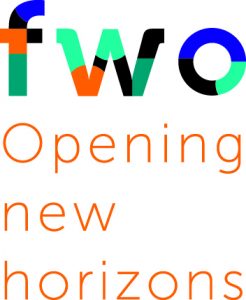
Today many organisations collect and manage archaeological data to document and preserve our cultural landscapes, sites and objects. Unfortunately, our current methods can make it difficult to re-use the data to tell stories and share findings in ways that are democratic, engaging and just. In fact, although a lot of work has been done to make archaeology Findable, Accessible and Interoperable (according to the FAIR Principles), little is understood about whether our data is Reusable – and who is using it.
The TETRARCHs project will experiment with approaches to collecting archaeological data and using that data for storytelling in ways that are meaningful for diverse audiences. Our experiments will help both those who preserve our heritage and the huge range of citizens across Europe who value it.
To do so, we will create new workflows for collecting and managing archaeology and heritage data. Here we’ll examine how the archaeological process in the field, the lab and the archive can be changed to support storytelling with the data. We’ll develop these workflows by partnering with an interdisciplinary team of archaeological specialists, data scientists and museum practitioners alongside three key audiences – domain experts, creative practitioners and memory institutions.
Our project includes archaeology data collection at three different scales – from whole landscapes, to single sites, to individual objects. We’ll explore these using four increasingly common technologies for data capture: airborne LiDAR, 3D scanning, digital field drawing and photography.
Once the workflows are complete, we’ll test them by supporting people who work in creative fields from across Europe to develop new stories and other imaginative works using archaeology data.
In the end, through TETRARCHs, we will produce:
- new workflows for field, laboratory, and archival practice in archaeology;
- the world’s first controlled vocabulary for cultural heritage storytelling;
- the first assessments of how effectively data is reused, following ISO Standard 25022: Measurement of Quality in Use;
- the first best practice recommendations for trusted digital repositories to optimise their archaeological data for re-use in storytelling.
CONSORTIUM:
- Project Leader : Sara Perry, MOLA (Museum of London Archaeology), Director of Research and Engagement, United Kingdom, e-mail
- Rimvydas Laužikas, Vilnius University, Faculty of Communication, Lithuania, e-mail
- Edisa Lozić, Znanstvenoraziskovalni Center Slovenske Akademije Znanosti in Umetnosti, Inštitut za Arheologijo, Slovenia, e-mail
- Nicoló Dell’Unto, Lund University, Archaeology and Ancient History, Sweden
- Helene Verreyke, University of Antwerp, Faculty of Design Sciences, Belgium
- Christophe Verbruggen, Ghent University, History, Belgium
COOPERATION PARTNERS:
- Julian Richards, SEADDA COST Action
- Finbarr Whooley, Museum of London
- Peter Carpreau,Head of the Old Master Department, Museum Leuven
- Sally Chambers, CLARIAH-VL Coordinator,Ghent Centre for Digital Humanities
- Kaat Debo, ModeMuseum Antwerpen
- Espen Uleberg, Digital Documentation, Museum of Cultural History
- Damian Murphy, University of York
 Start date
Start date
1 October 2022
 Project duration
Project duration
36 months
 Project budget
Project budget
€ 1 407 983
Funding organisations
![]()
![]()
![]()
![]()

